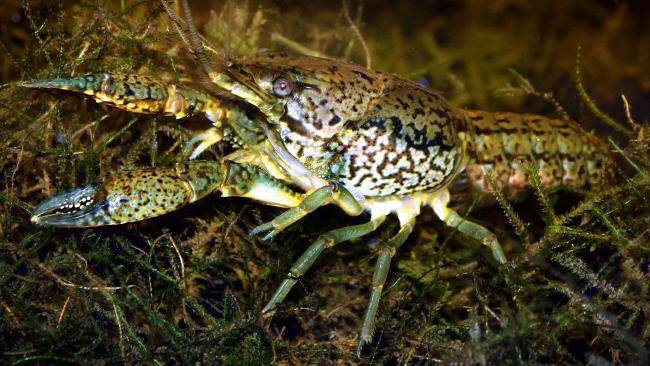This Mutant Crayfish Can Clone Itself—And It’s Starting to Take Over Entire Countries.
A species of crayfish thought to have evolved the ability to clone itself when bred in the pet trade has become a serious invasive pest in many parts of the world. For the first time, researchers have sequenced its entire genome to better understand its origin, publishing their results in Nature Ecology & Evolution.
It is thought that the marbled crayfish, officially known as Procambarus virginalis but also called the Marmorkrebs, first arose at some point during the 1990s in Germany due to the pet trade. It was realized that some of the captive slough crayfish (Procambarus fallax), which are native to North America, had become parthenogenetic, meaning all members are female and reproduce by cloning themselves.
Where exactly the marbled crayfish originated from is somewhat debated, as is whether or not it should even be classed as its own species, although the authors of this latest study think that there is enough evidence to do so. While most animals – like you and I – have two sets of every chromosome in our cells, the Marmorkrebs have acquired a full third set of chromosomes, making them triploid.
The crustacean’s ability to clone itself, coupled with the fact that it’s widespread and common in the pet trade, means it poses a serious threat as an invasive species. While this threat has to date been limited in Europe where it originated (with the European Union now in the process of banning it), in other places, namely Madagascar, it has already begun to take over.
Even with such a fascinating and incredibly recent origin as a species, and not to mention its potential environmental and economic impact when released into the wild, there is very little genetic data on the marbled crayfish. So the researchers set out to decode the animal’s DNA, providing not only the first sequenced genome of the marbled crayfish, but of any decapod crustacean, a group that includes lobsters, crabs, and prawns.
The genome of the marbled crayfish was compared to that of the slough crayfish and other closely related species, showing that while all Marmokrebs are almost genetically identical (unambiguously conforming their clonality), there have been genetic changes since the species came into existence. The results show that two of the crustacean’s sets of chromosomes are more similar than the third, suggesting that the species descended from two distantly related slough crayfish, before one of the chromosomes then replicated itself.
The genetic analysis also sheds light on the situation in Madagascar. The researchers show that the invasive population has increased 100-fold geographically over the last decade, and likely comprises millions of individuals. They also found that wild-caught marbled crayfish were almost identical to the original Marmokrebs bred in Germany in 1995, suggesting that the entire world population of the crustacean is a clone.





























